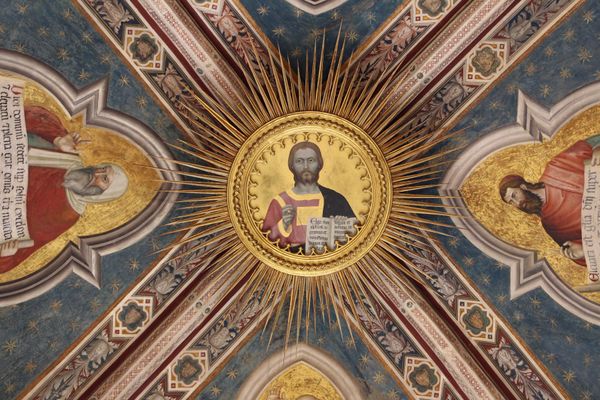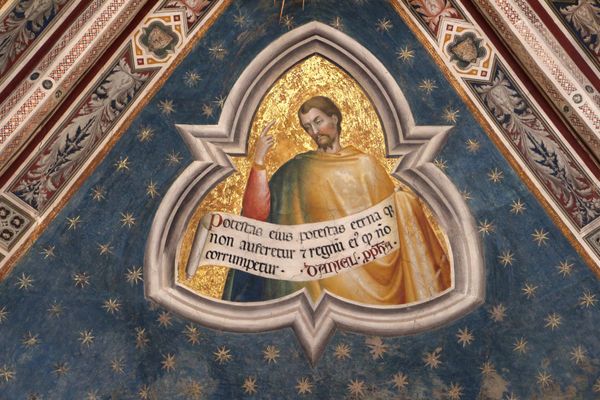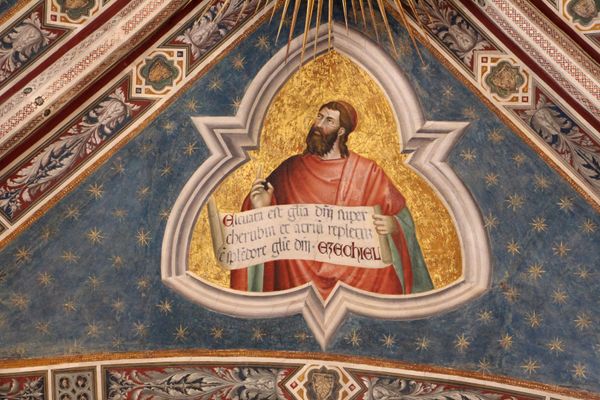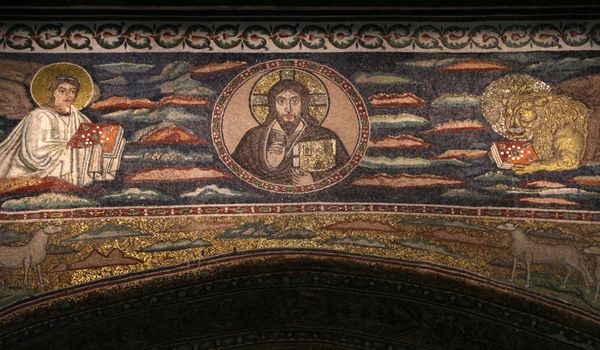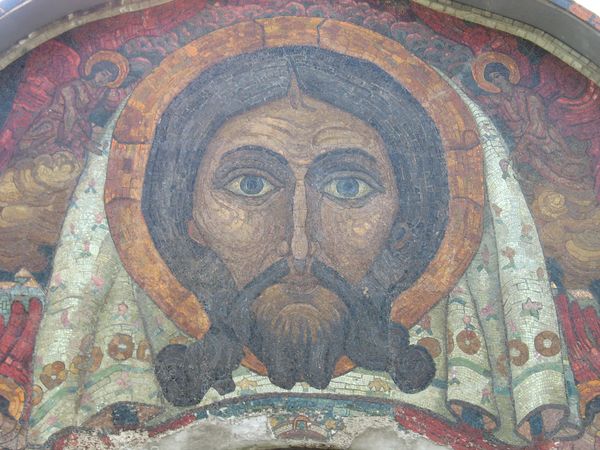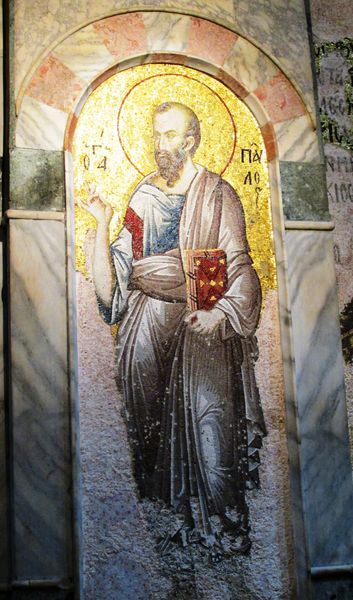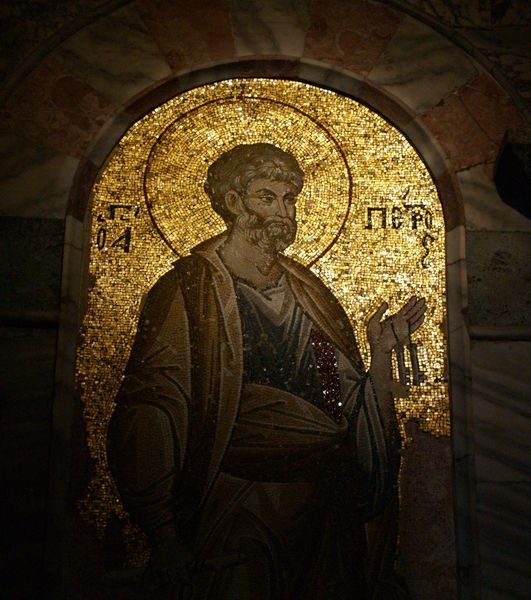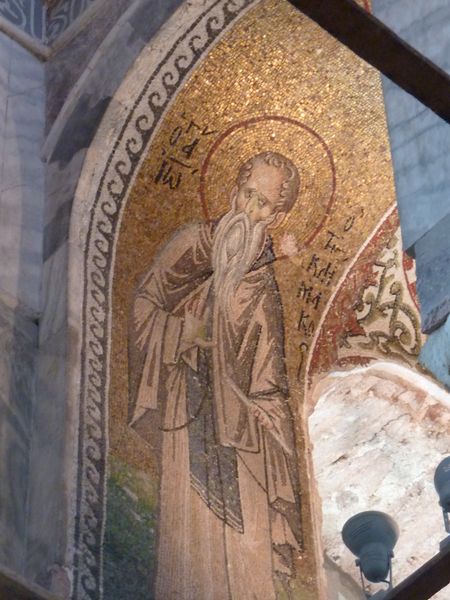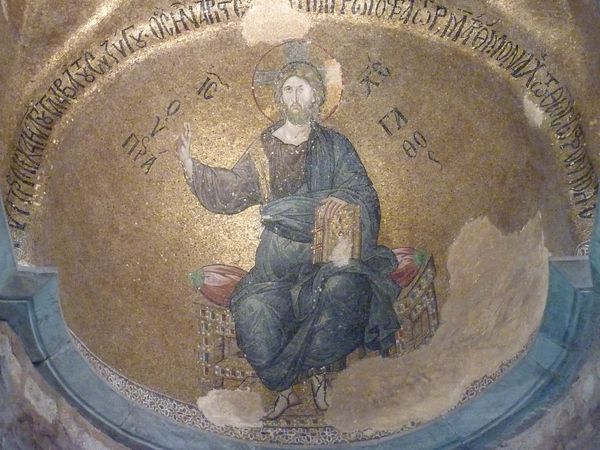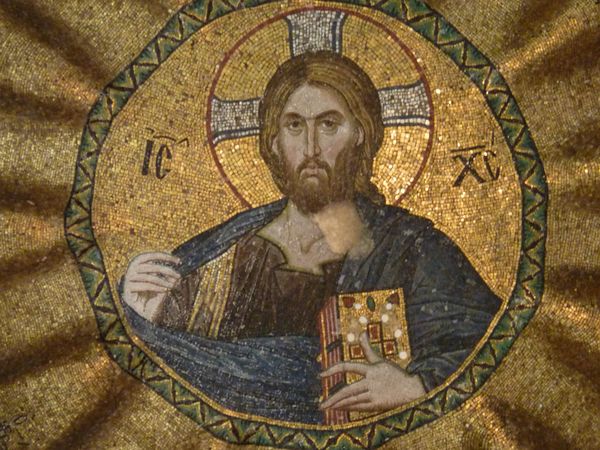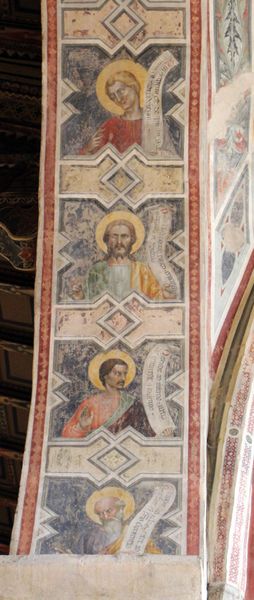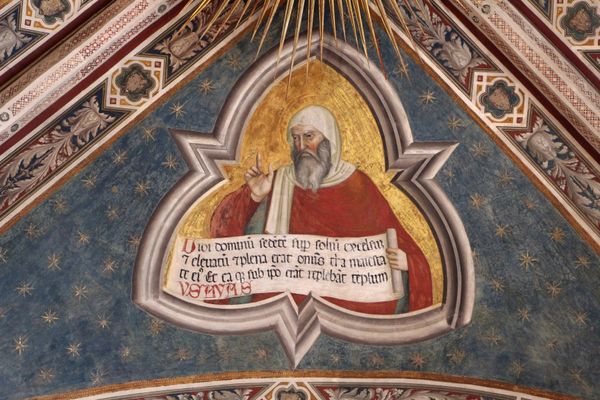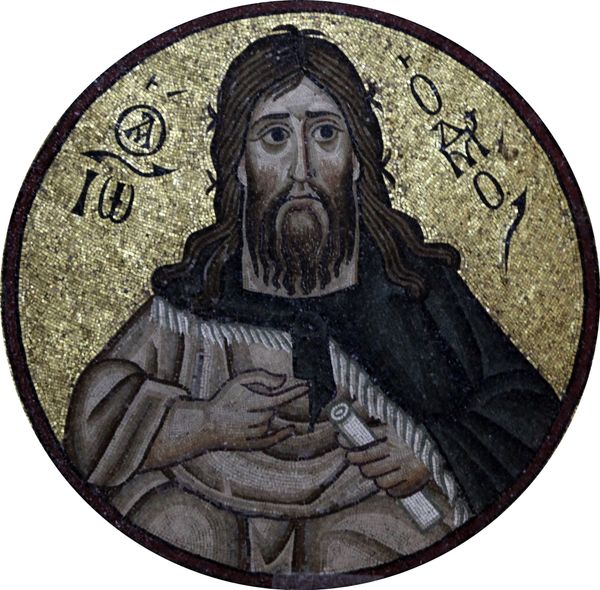
tempera, painting, fresco, photography, architecture
#
portrait
#
byzantine-art
#
medieval
#
tempera
#
painting
#
holy-places
#
figuration
#
historic architecture
#
fresco
#
traditional architecture
#
photography
#
history-painting
#
italian-renaissance
#
architecture
Copyright: Public domain
Editor: This is a photograph of the Rinuccini Chapel in the Basilica of Santa Croce, made with tempera and fresco by Giovanni da Milano around 1370. It's really striking. The geometric patterns and the iconic representation of Christ in that central roundel make me think of Byzantine art. What’s your take on this image? Curator: It’s a powerful synthesis, isn’t it? Placing it within the basilica tells us about its function. Santa Croce was a key Franciscan church in Florence, supported by wealthy families like the Rinuccini. A chapel commission was a major statement of patronage, of cultural and religious power. The Byzantine echoes – that iconic Christ Pantocrator – served to root the Rinuccini in a tradition of Christian authority. Editor: So, commissioning this wasn’t just about personal devotion, but a public display? Curator: Precisely! Think about the placement, too. The chapel isn’t some hidden alcove; it's a visually prominent assertion of the Rinuccini family's position within Florentine society and within the narrative of salvation. Editor: Interesting! I never considered the chapel as a way of projecting status in the community. Curator: It's fascinating to consider how artistic choices can subtly, or not so subtly, reinforce social hierarchies and shape public perception of piety and power. This wasn't simply religious art; it was a carefully crafted message for a specific audience. Editor: I see how analyzing its original setting changes my understanding entirely. Curator: Right? It's a potent reminder that art is never created in a vacuum; it always exists within a web of social, political, and economic forces. Editor: This makes me think differently about approaching other artworks in churches. Thanks so much for sharing.
Comments
No comments
Be the first to comment and join the conversation on the ultimate creative platform.
